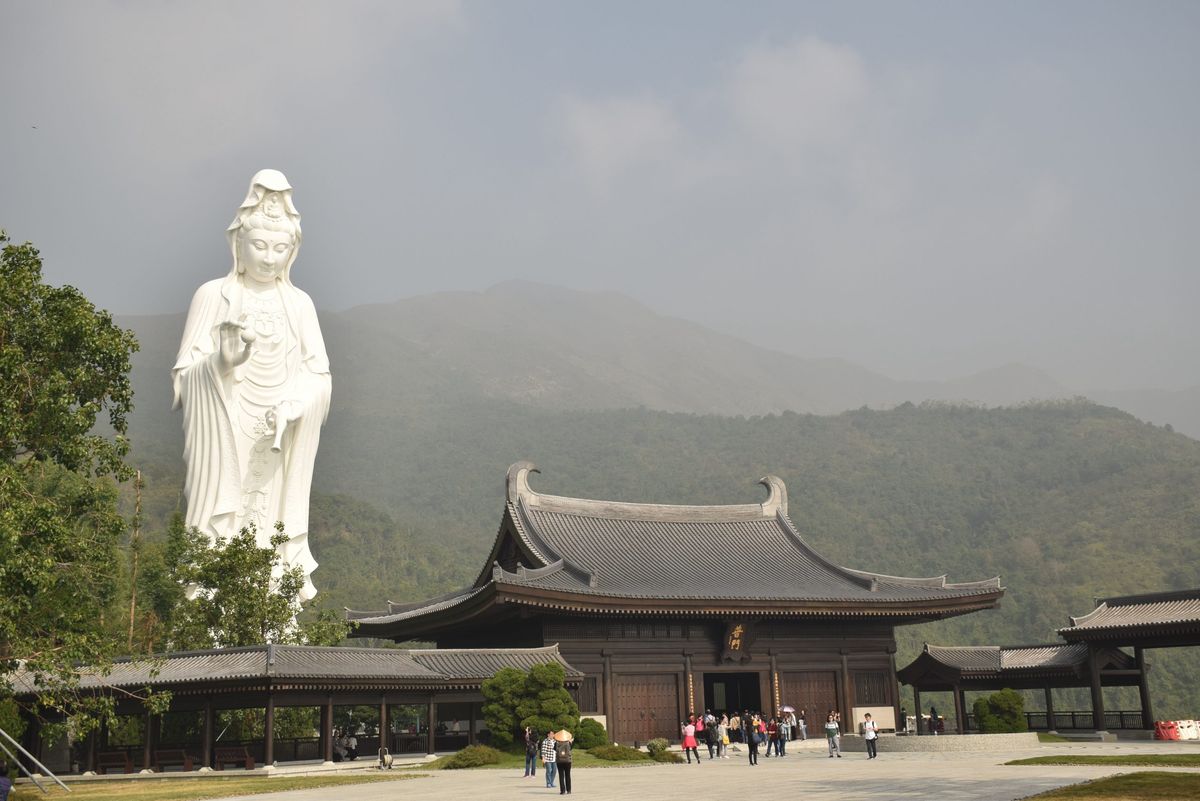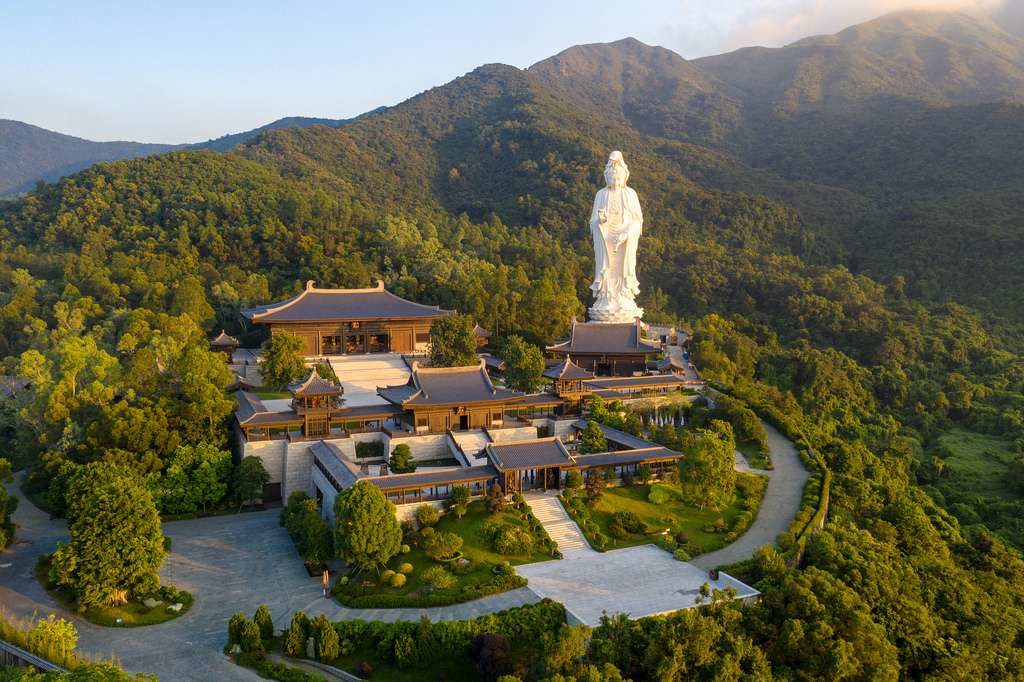Guan Yin – the story behind Hong Kong’s Goddess of Mercy statue at Tsz Shan Monastery

A few minutes every morning is all you need.
Stay up to date on the world's Headlines and Human Stories. It's fun, it's factual, it's fluff-free.
Who else besides a billionaire could have a 76-metre tall completely alabaster-white statue of a Buddhist legend, Guan Yin also known as Kwun Yum – the Goddess of Mercy, constructed over the rolling hills of Tai Po’s Ting Tsz in Hong Kong?
Tycoon Li Ka-shing is the benefactor and visionary of Tsz Shan Monastery, a US$1.5 billion project to encourage the practice of Buddhism and provide a peaceful place for Buddhist practitioners.
Tsz Shan Monastery
The complex is 500,000 square feet and took 12 years to complete in 2015. The Tsz Shan Monastery Buddhist Art Museum, on the other hand, sprawls across 24,000 square feet, featuring hundreds of Buddhist statues, handwritten sutras, paintings and carvings opened in 2019 as part of the mission to exemplify Buddhist culture.
To visit its very green grounds, where you will find a Bodhi tree, lush gardens and a “brilliance pond,” or to also learn more about Buddhism by attending theological lectures in one of the many halls on the campus grounds, be sure to arrive early to take advantage of the free entrance and limited capacity. Reservations for the art museum are needed. Indeed, Tsz Shan Monastery is a worthy tourist site itself, but the real eye-opening wonder is the statue of Guan Yin which is actually double the size of the Big Buddha on Lantau Island.

However, while the size of Guan Yin is quite impressive, so is her story.
The story behind Guan Yin
Advocates of transgender rights would be interested in knowing that Guan Yin began as a man called Avalokitesvara, a god of compassion.
As time wore on, Avalokitesvara’s features softened and his energy became recognized as a feminine energy. Also, translation of a factor in the sex change as in the seventh century Xuanzang, a traveling Chinese Marco Polo and Buddhist monk, is known to have brought over Mahayana Buddhist texts from India which transformed the god from Avalokitesvara, “lord who gazes down at the world” into Guanshiyin, “perceiving the sounds of the world.”
Over the centuries, the name developed into Guanyin, also known as Kwun Yum, as Vajrayana, a Tibetan form of Buddhism, found its path into the understanding of this god among the Han Chinese. Interestingly also along the way, another goddess in the Buddhist religion named Tara, became known as Guan Yin so Guan Yin has many identities to incorporate throughout history.
Modern representations commonly depict Guan Yin clothed as a female draped in long white robes.
In legends handed down through time, Guan Yin has made multiple and significant appearances. In the infamous tales of “Journey to the West,” a series of stories about the journey of Xuanzang over the borders of China into the Western countries. Guan Yin coordinates tasks for the adventurers such as the Monkey King to complete and assists the characters in their adventures in this traditional tale.
In another classic story, the Legend of Miao Shan, Guan Yin has a very central role. Young Miao Shan is a girl of pure heart and kindness but has a father who is selfish and greedy. Even though pious Miao Shan is diligent in her Buddhist practice, her father forces her to become a nun against her wishes and inside the monastery, there are very cruel monks who make Miao Shan work constantly without rest.
Her malicious father encourages such terrible treatment of his daughter. His hate of his daughter is so strong that when he sees how she has befriended the animals around the temple, he sets fire to the entire area. And yes, this story sounds somewhat similar to the Disney version of Snow White, it has a very special turn of events.
Miao Shan hurries to put the fire out with her own hands and later dies by murder, though also somehow comes back into the story to sacrifice her arms and eyes to cure her mean father’s jaundice.
This monumental good deed sends Miao Shan on a lighted path into heaven where she transforms into Guan Yin. Due to an overly kind heart, she returns back to Earth as the goddess intent on ending human suffering. And so Guan Yin does exist on Earth as she stands upon the tallest peak in Tai Po looking down upon the world and searching to find anyone in need of her aid.
As many people ride along the bike paths of Tai Po, they can easily locate the Tsz Shan Monastery by the sight of the towering goddess, acting as a very impressive marker for those traveling on the bike routes who may have lost their way.
Is your business doing something cool that you want to show off? Get in touch at hello@themilsource.com




Comments ()